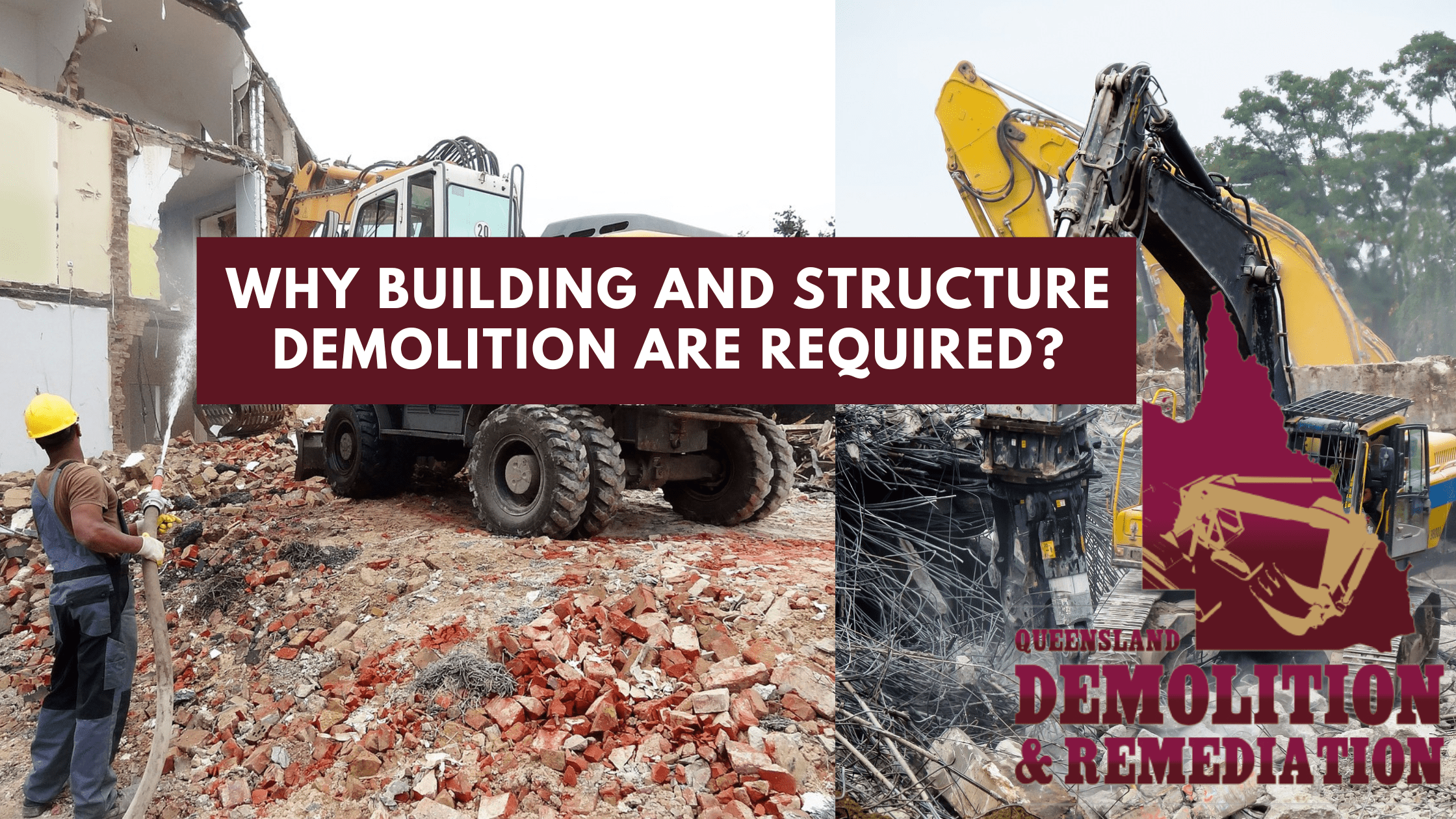The demolition of buildings and structures is a complex and purpose-driven process that plays a significant role in urban development, safety enhancement, and environmental sustainability. From outdated structures to urban renewal projects, there are several compelling reasons why building and structure demolition are required. In this article, we delve into the various aspects of this process, exploring its necessity, benefits, and intricacies.
Introduction
Building and structure demolition is a practice that involves the intentional dismantling of existing edifices, whether for safety concerns, urban development projects, or other legitimate reasons. This intricate process requires careful planning, adherence to safety protocols, and often the expertise of demolition professionals. In this comprehensive guide, we’ll navigate through the underlying reasons for the requirement of building and structure demolition, offering insights into its significance and the methods involved.
Why Building and Structure Demolition are Required?
Demolition of buildings and structures serves several critical purposes, ranging from safety considerations to urban planning. Let’s explore some of the primary reasons that necessitate the demolition of structures:
Urban Redevelopment and Revitalization
Cities are constantly evolving, and urban planners often find the need to rejuvenate certain areas to accommodate modern infrastructure and facilities. Outdated and dilapidated structures hinder progress, making demolition essential for the transformation of neighborhoods. This process allows the construction of modern buildings, parks, and community spaces that align with current urban planning principles.
Structural Instability and Safety Concerns
A paramount reason for building demolition is the compromised structural integrity of a building. Structures that have suffered extensive damage due to natural disasters, poor construction practices, or simply the passage of time pose a significant risk to occupants and neighboring properties. In such cases, demolition is the safest solution to prevent potential hazards.
Environmental Considerations
In some cases, buildings may contain hazardous materials like asbestos, lead paint, or other pollutants that pose environmental risks. Demolishing these structures in a controlled manner helps mitigate the release of harmful substances into the environment. Moreover, when buildings are replaced with eco-friendly designs, it contributes to a greener and more sustainable future.
Land Utilization and Optimization
As urban spaces become more valuable, the efficient utilization of land becomes crucial. Old and unused buildings can hinder the potential of a plot, preventing the construction of new, more functional structures. Demolition frees up space for a range of purposes, from commercial ventures to public amenities, enhancing the overall functionality of the area.
Obsolete Architecture and Design
Architectural trends and design standards evolve over time. Structures that were once groundbreaking might become obsolete in terms of functionality, energy efficiency, or aesthetic appeal. In such cases, demolition allows for the creation of modern buildings that better meet the needs and preferences of the current era.
Natural Disaster Recovery
Communities affected by natural disasters, such as earthquakes, floods, or hurricanes, often face extensive property damage. In cases where rebuilding is more expensive or impractical than demolition and reconstruction, demolition provides a fresh start, helping communities recover and rebuild resilient structures.
The Process of Building and Structure Demolition
The demolition process is far from haphazard; it involves careful planning, precise execution, and adherence to safety regulations. Professional demolition companies follow a comprehensive process:
- Assessment and Planning: Demolition experts conduct thorough assessments of the structure, evaluating its stability, potential hazards, and the best approach for demolition.
- Permit Acquisition: Depending on local regulations, permits may be required for demolition. Professionals handle the necessary paperwork to ensure compliance.
- Utility Disconnection: Prior to demolition, utilities such as water, gas, and electricity are disconnected to ensure safety during the process.
- Structural Demolition: The actual demolition process varies based on the structure’s characteristics. It can involve implosion, mechanical demolition, or deconstruction.
- Waste Management: Demolition generates a substantial amount of debris. Proper waste management is essential, involving sorting, recycling, and disposal of materials.
- Site Clearing: Once the structure is demolished and debris is cleared, the site is prepared for the next phase, whether it’s new construction or leaving it as open space.
FAQs
Q1: Is demolition environmentally friendly?
A1: Demolition’s environmental impact depends on the methods used and the practices followed. While demolition involves waste generation, modern techniques focus on recycling materials and minimizing pollution. Some demolitions even contribute to environmental goals by making way for energy-efficient and sustainable structures.
Q2: How are historical buildings handled during demolition?
A2: Handling historical buildings during demolition requires a delicate balance between preservation and progress. If a historical structure can’t be saved, experts might document its details and architectural features before carefully dismantling it. This documentation can provide insights into its history and design.
Q3: Can demolition be a part of urban planning?
A3: Absolutely. Demolition is often a crucial component of urban planning and development. It allows for the removal of outdated or dilapidated structures to make way for new and improved constructions that align with the city’s goals and vision.
Q4: What safety measures are taken during demolition?
A4: Safety is paramount during demolition. Before starting, experts conduct thorough assessments to identify potential hazards. Safety measures include securing the site, using specialized equipment, conducting controlled implosions if necessary, and adhering to regulations to protect workers and the surrounding community.
Q5: How can communities benefit from strategic demolitions?
A5: Strategic demolitions can bring several benefits to communities. They can lead to improved aesthetics, increased property values, enhanced safety, and better infrastructure. Additionally, these demolitions can pave the way for new developments that cater to the community’s evolving needs.

